Mofaji Yao (Compendium of Ink-Making Techniques) is a Ming Dynasty treatise authored by Shen Jisun during the Hongwu era (1368–1398), documenting the intricate techniques for crafting lampblack ink. The work was rediscovered during the Qing Dynasty and later compiled into the Siku Quanshu (Complete Library of the Four Treasuries) under Emperor Qianlong’s order.
Key Details
- Content & Structure
The text systematically outlines 21 steps of ink production, including:- Oil immersion (浸油), smoke burning (烧烟), screening ash (筛烟), glue melting (镕胶), and mold pressing (印脱).
- Each process is accompanied by illustrations and explanatory texts, detailing tools, materials, and methods.
- Historical Context
- Shen Jisun compiled the work after learning techniques from a Zhejiang ink master and a Buddhist monk.
- The original text was lost but later extracted from the Yongle Dadian (永乐大典) during the Qianlong reign.
- Notable Editions
- Qing Dynasty Illustrated Scroll (徐扬绘本): Painted by court artist Xu Yang (徐扬) in 1776, this color scroll integrates Shen Jisun’s methods with Qianlong’s revisions. It opens with the emperor’s preface praising its documentary and artistic value.
- Wuying Palace’s Juzhen Edition (武英殿聚珍版): A woodblock-printed version from 1775, featuring revised illustrations and annotations by scholars like Lu Xixiong (陆锡熊).
- Cultural Significance
- The treatise bridges artistry and technical precision, depicting workshops, tools (e.g., oil basins, smoke bowls), and labor-intensive processes.
- Emperor Qianlong hailed it as a vital record of “ancient techniques” (gufa), surpassing earlier ink manuals focused on decorative patterns.
Key Figures
- Shen Jisun (沈继孙): Ming scholar from Suzhou, credited with preserving lost ink-making methods.
- Xu Yang (徐扬): Qing court painter known for architectural and figurative precision in the scroll.
- Shen Chu (沈初): Official who co-authored the scroll’s colophon under imperial decree.
Legacy
The scroll and texts are housed in institutions like the National Palace Museum (Taipei) and Palace Museum (Beijing), serving as critical references for traditional Chinese craftsmanship

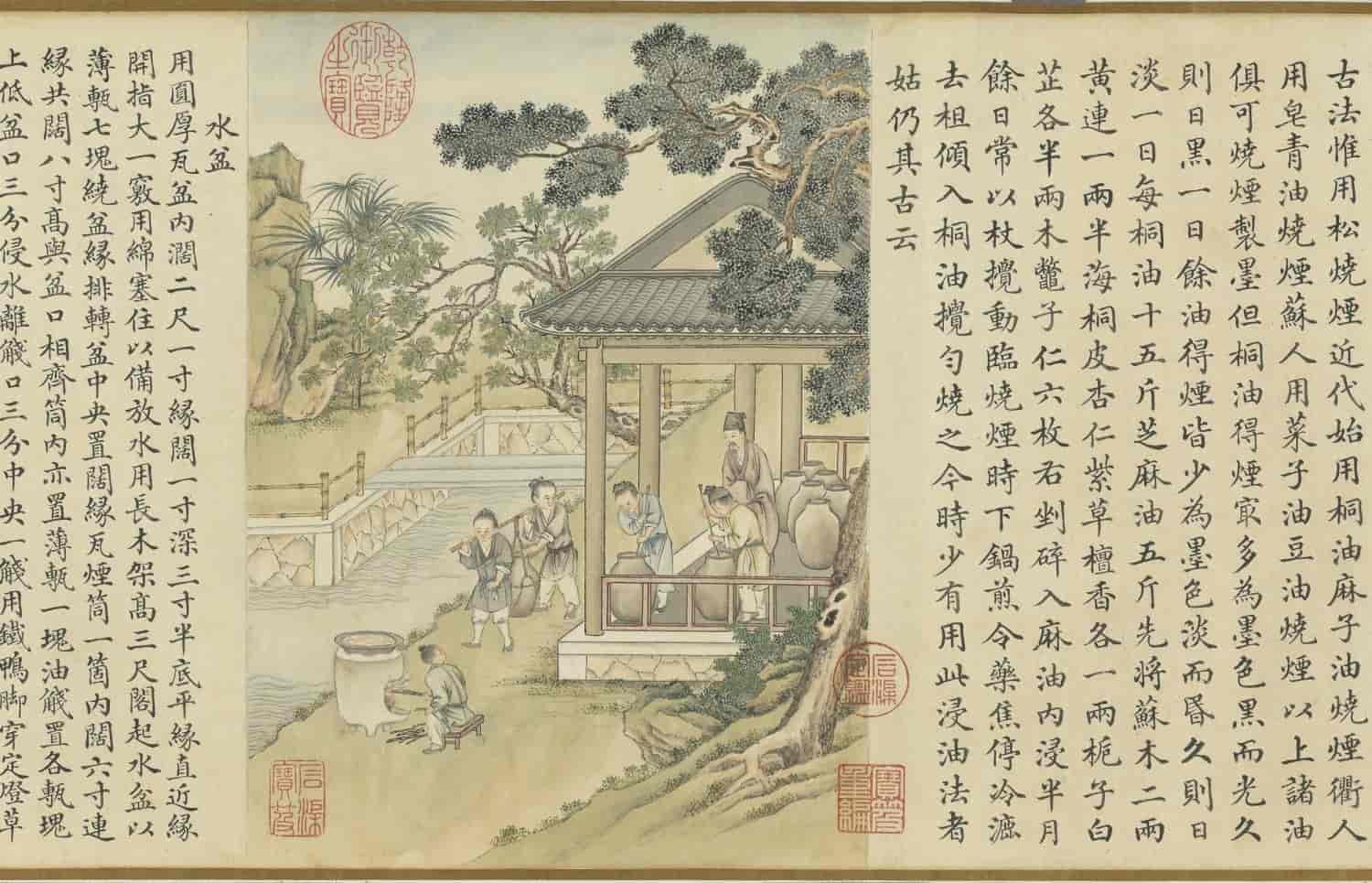
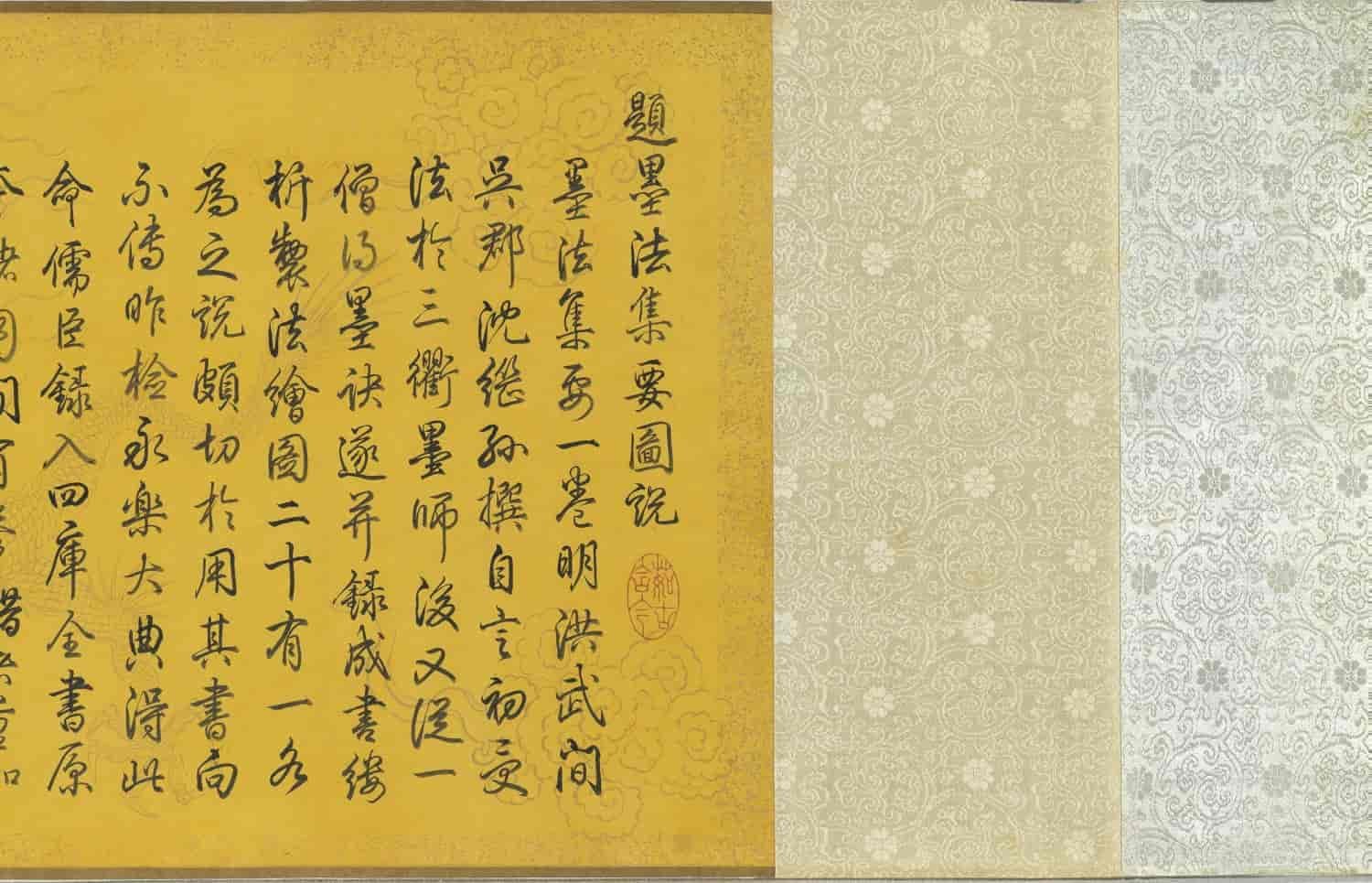

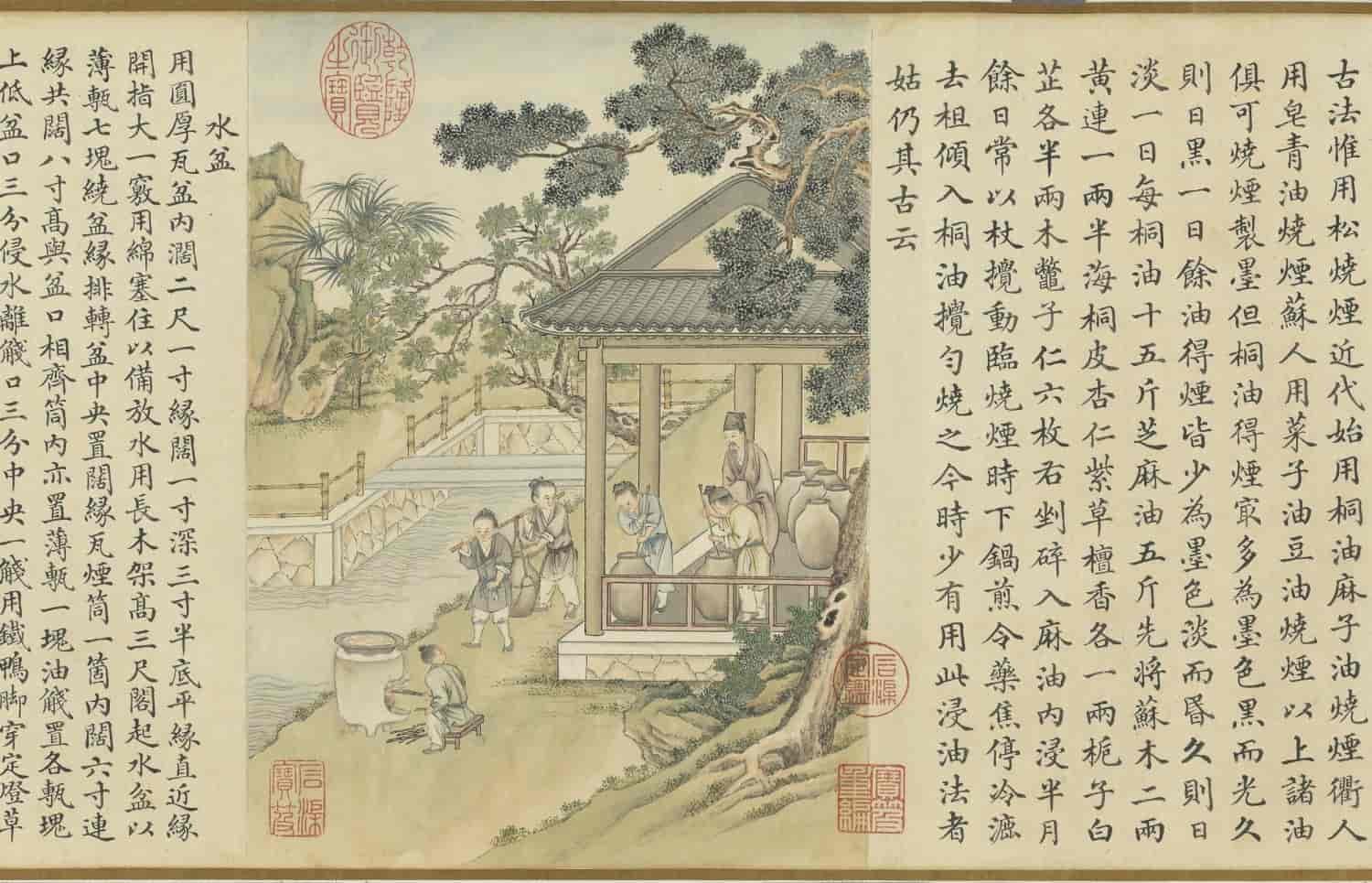
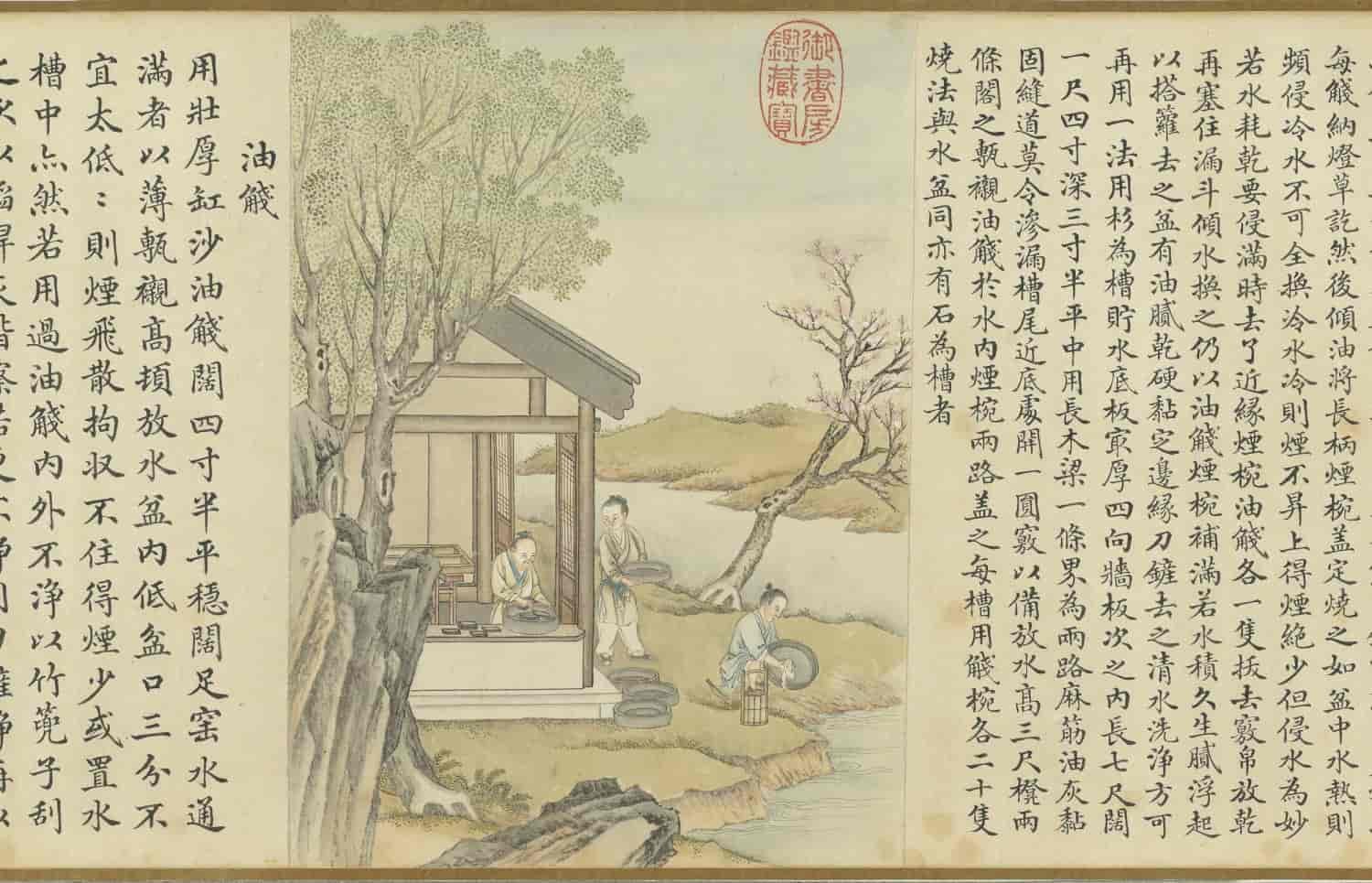
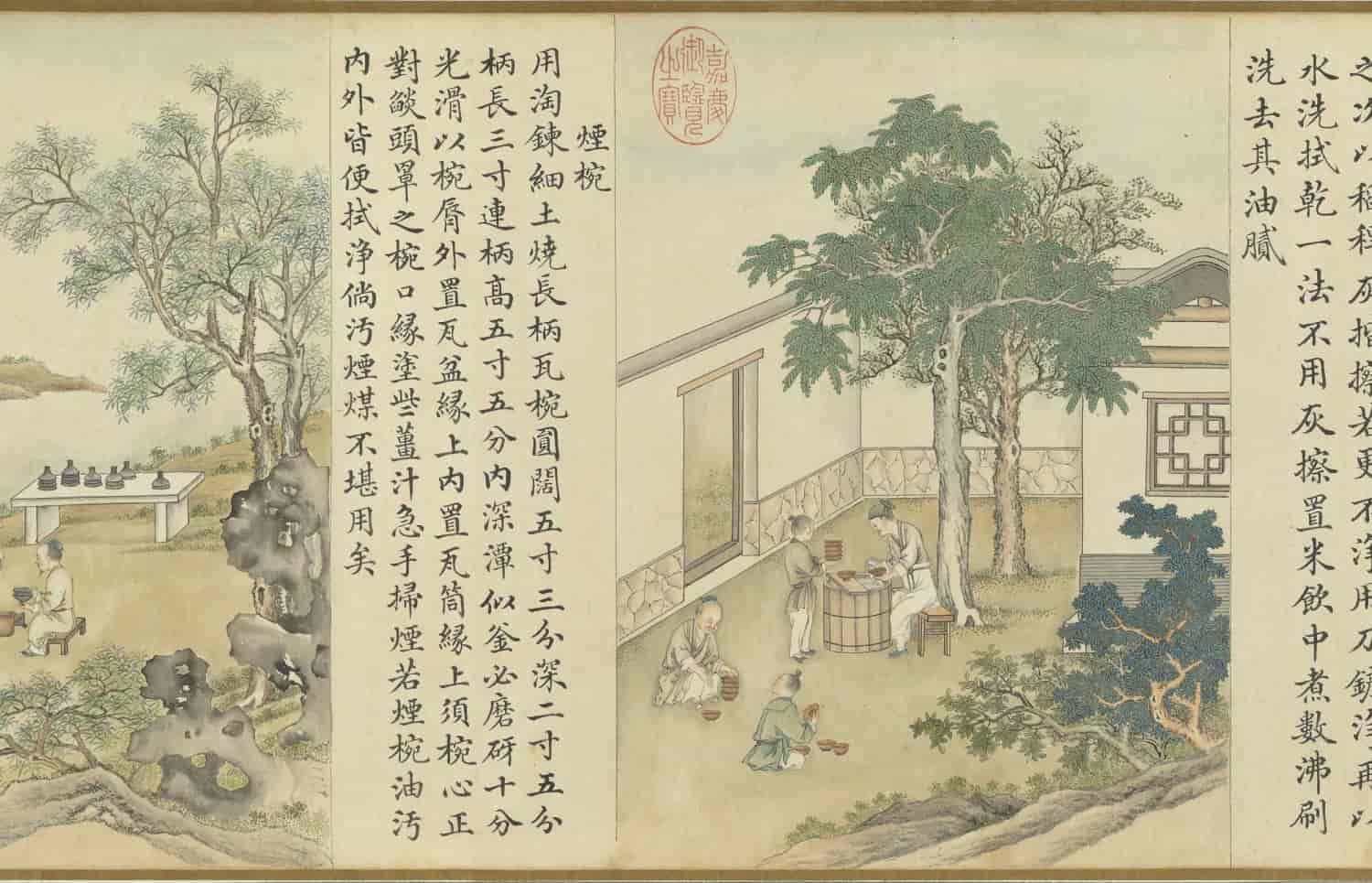
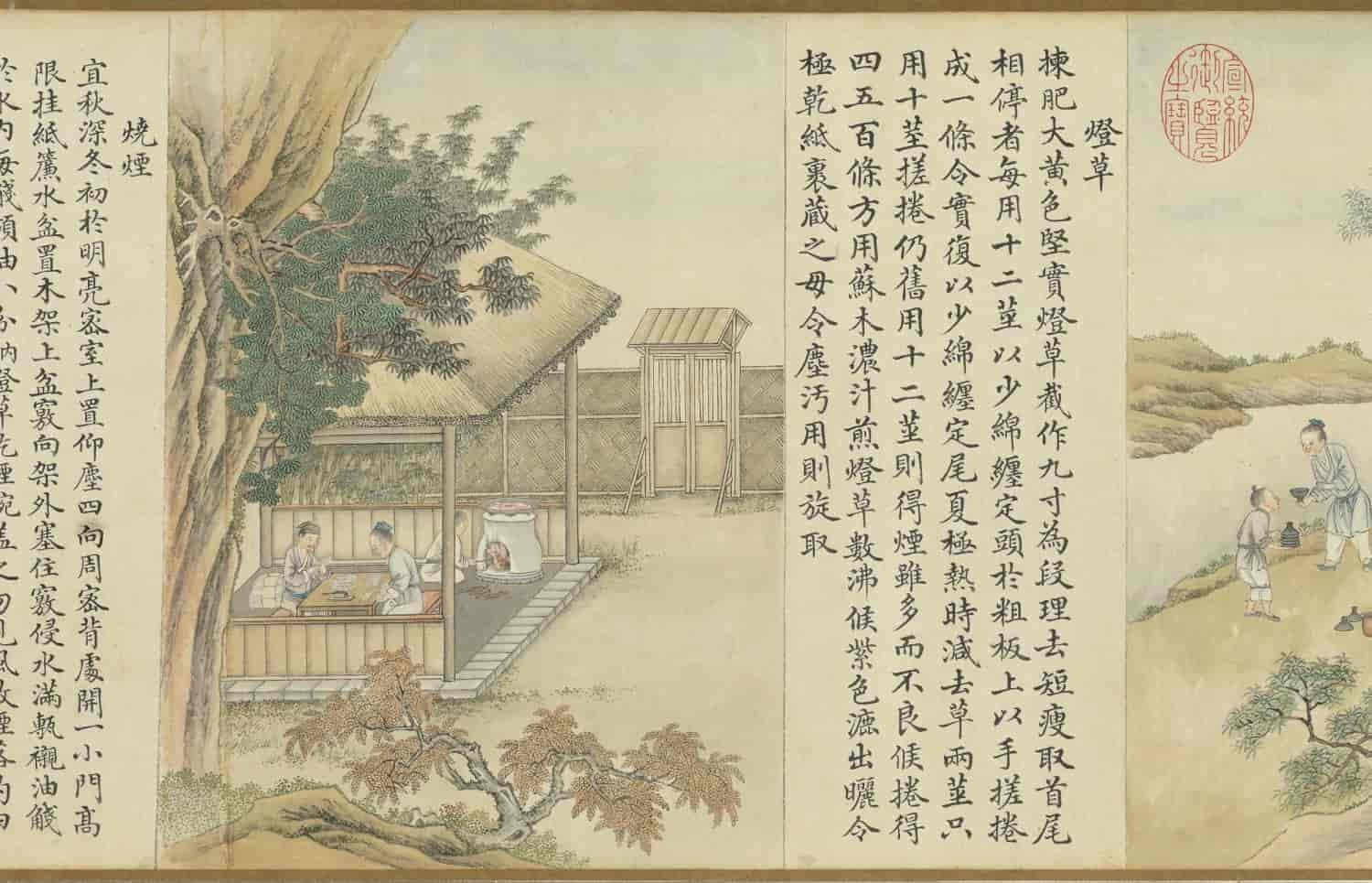
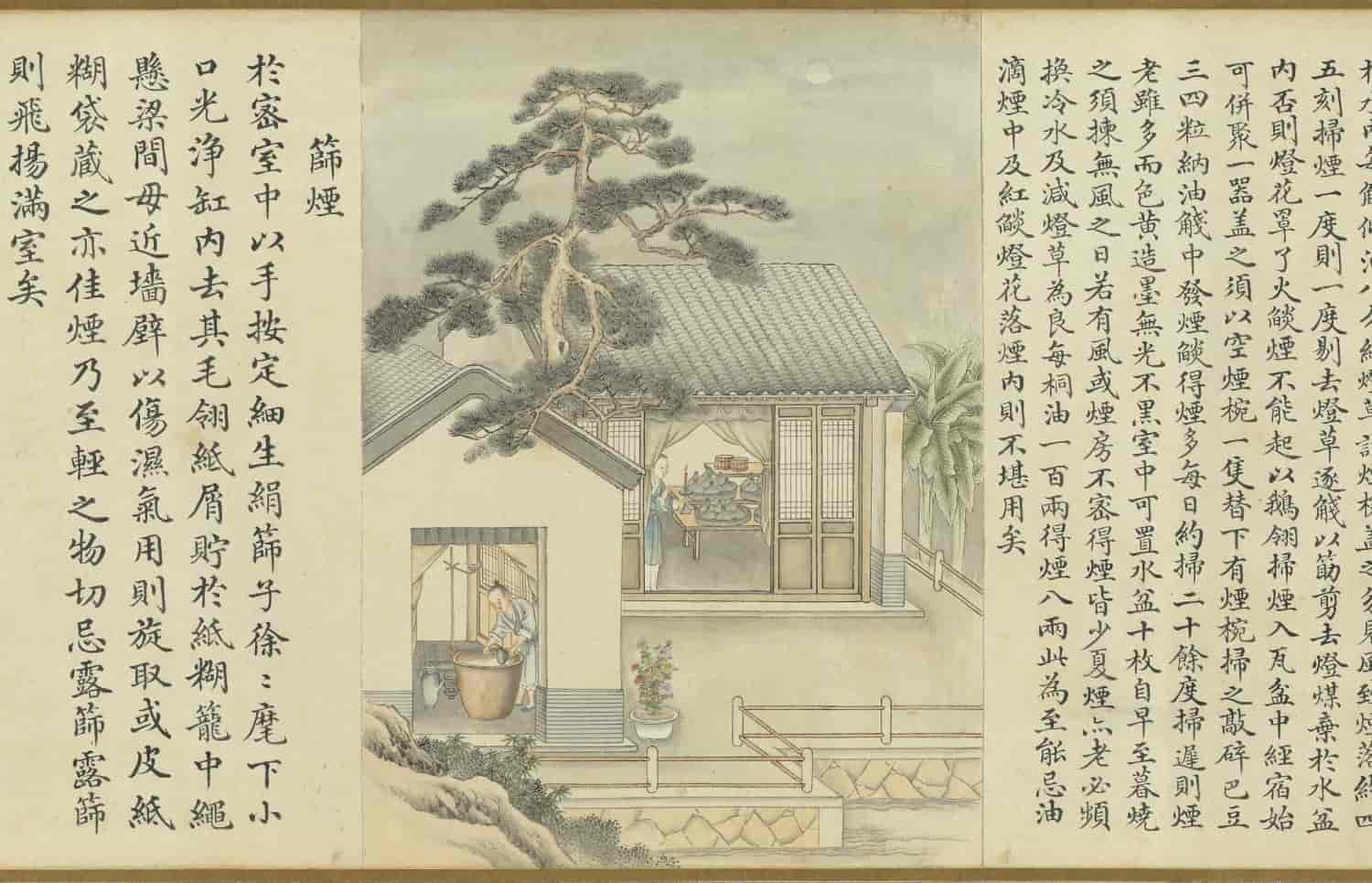
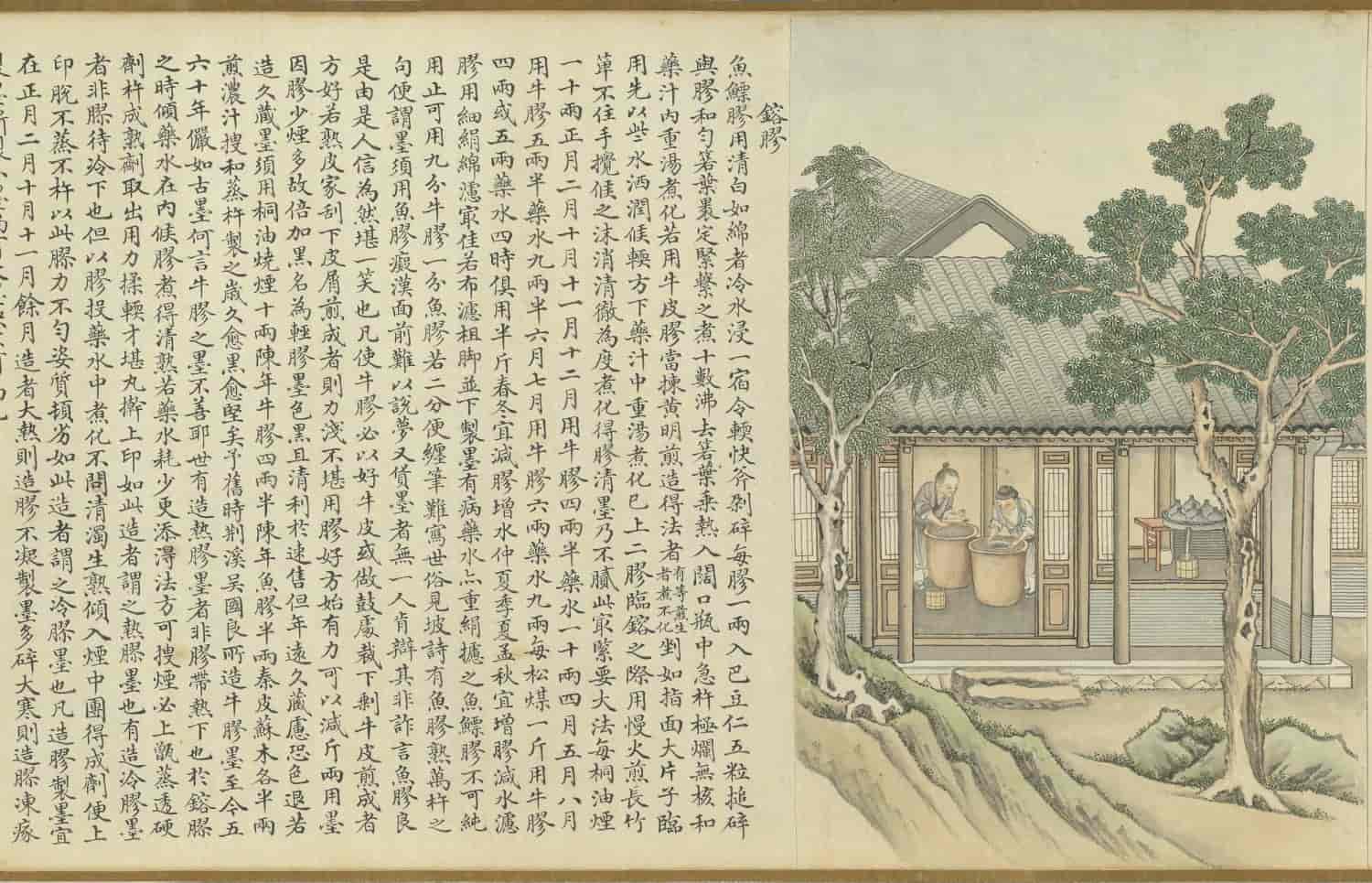
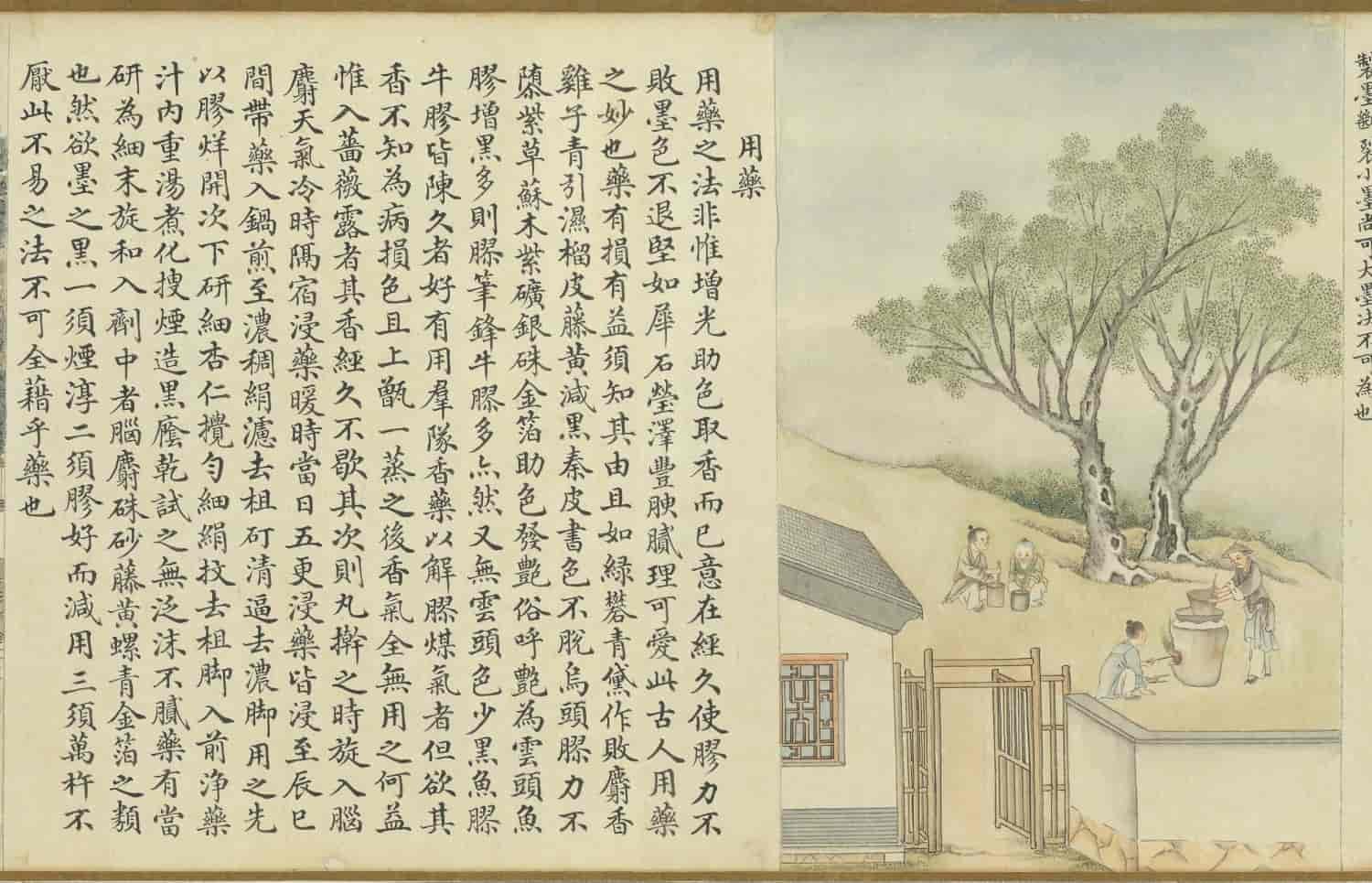
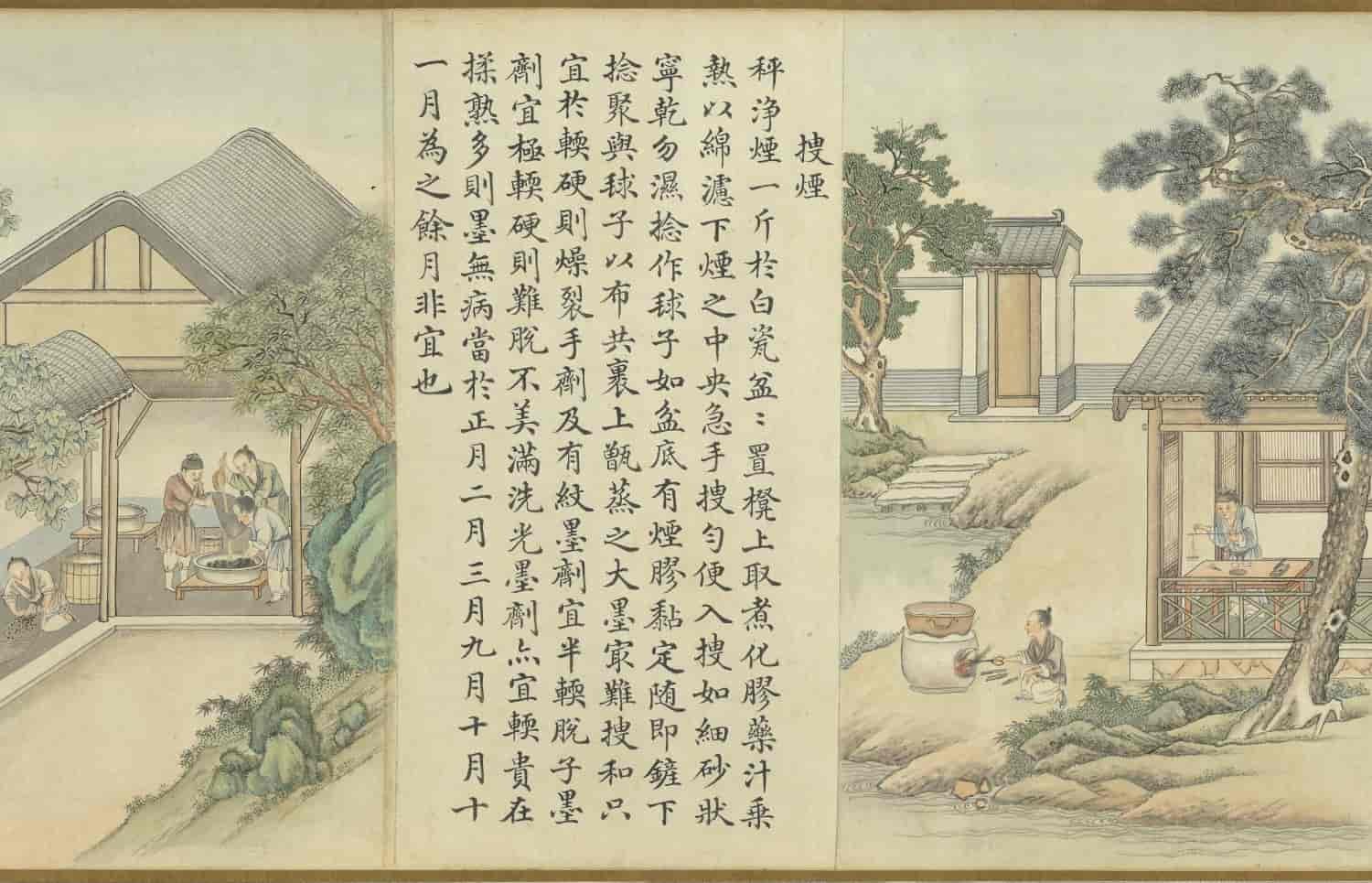
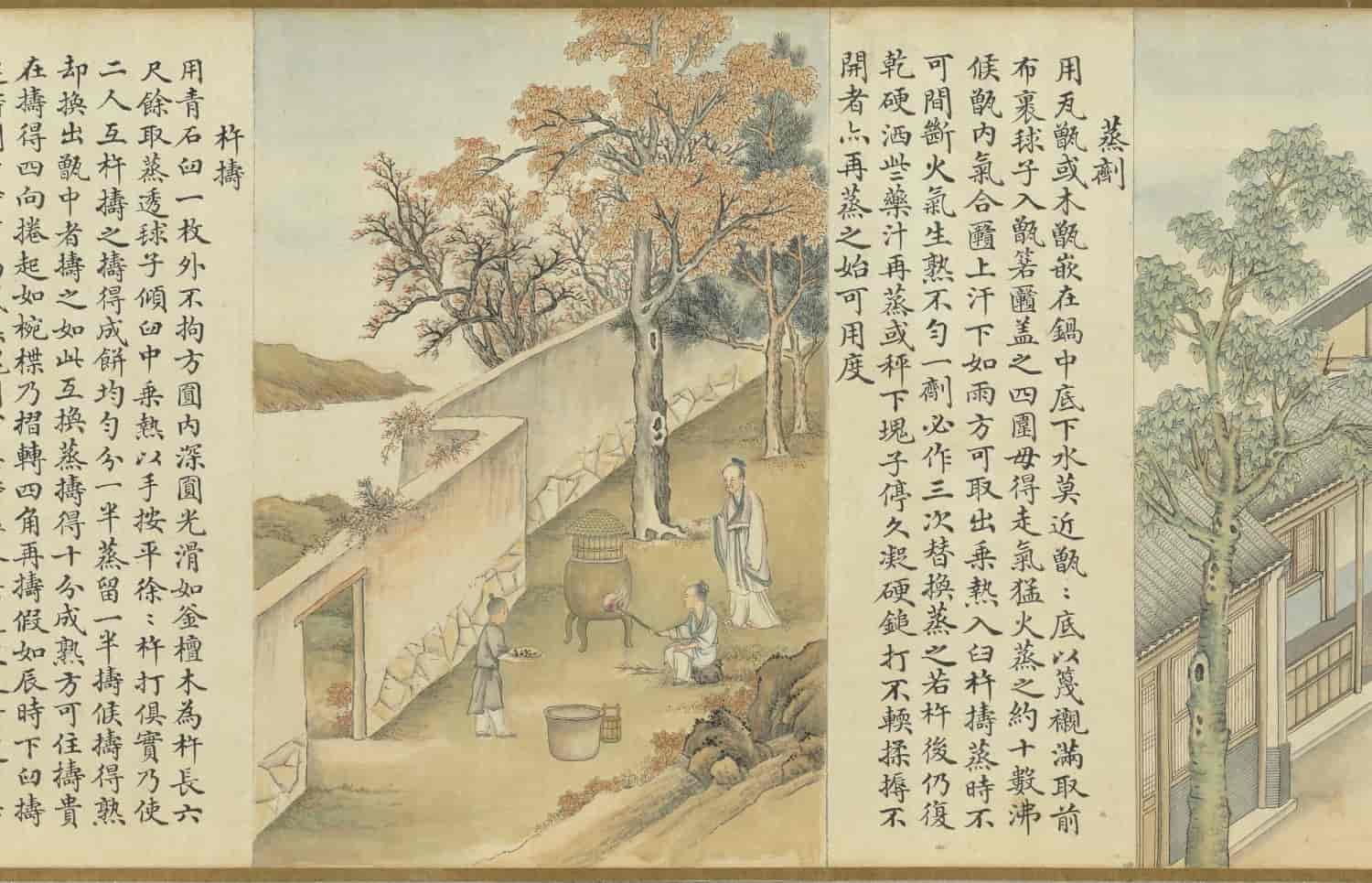
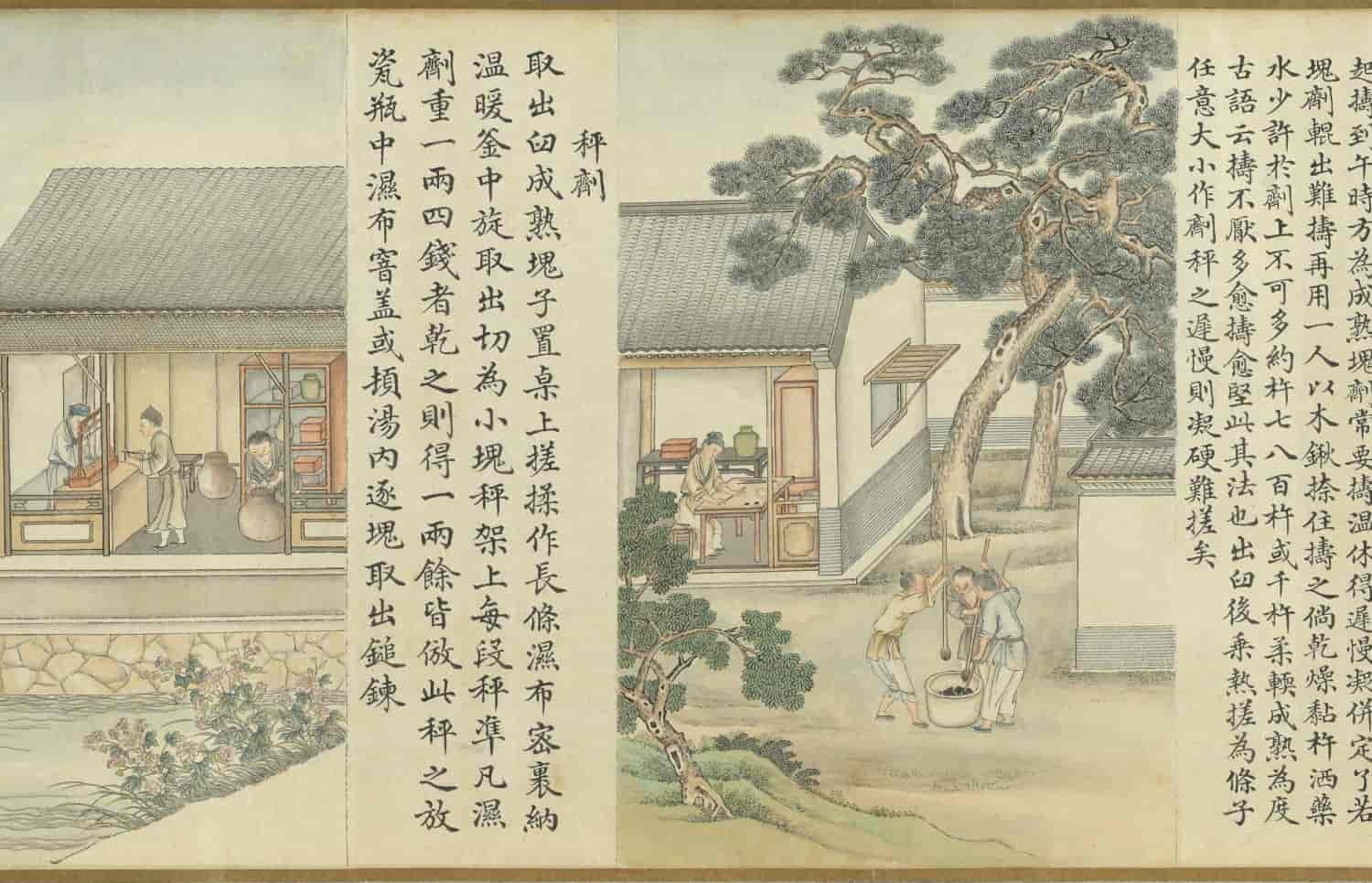
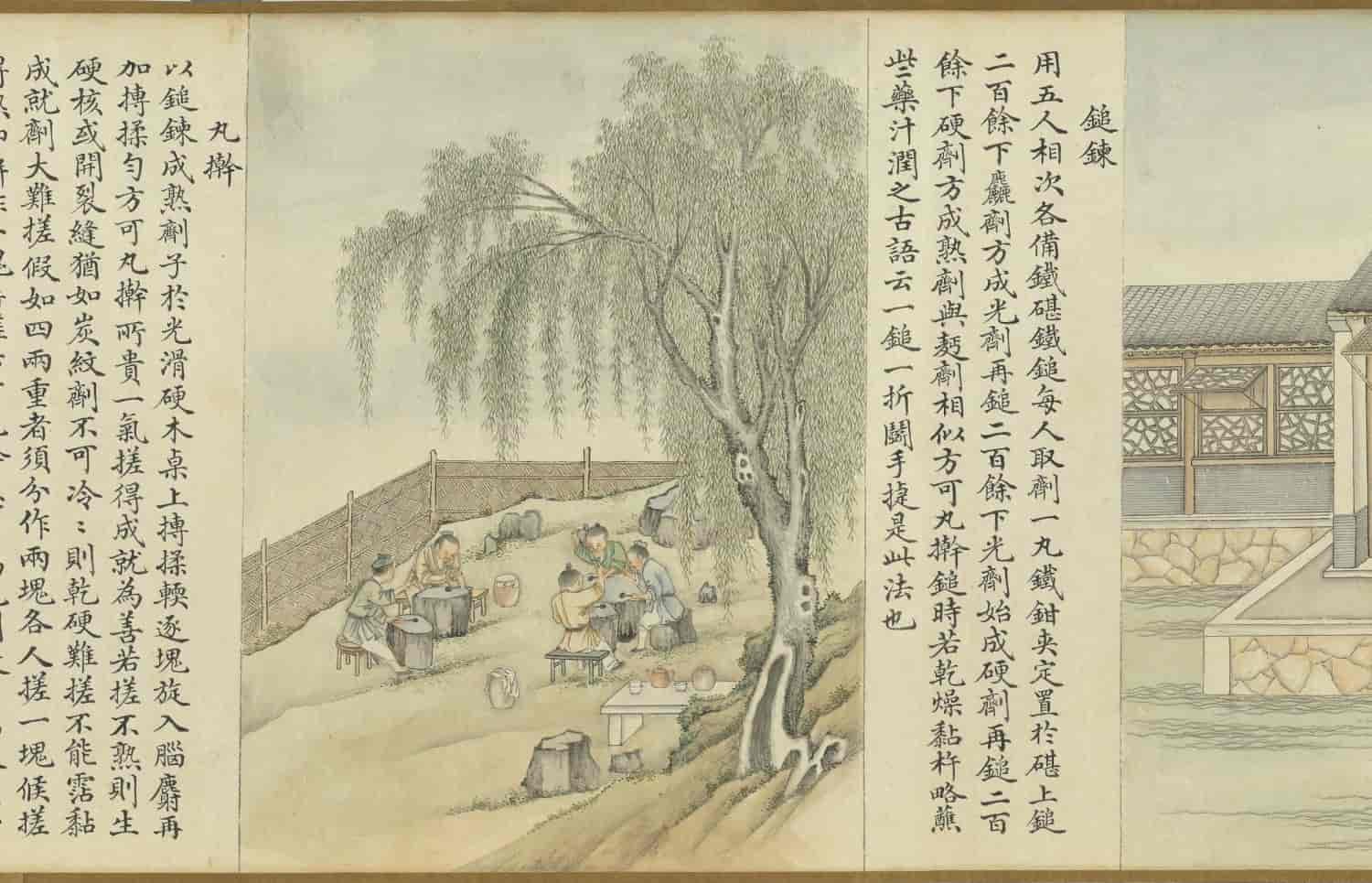
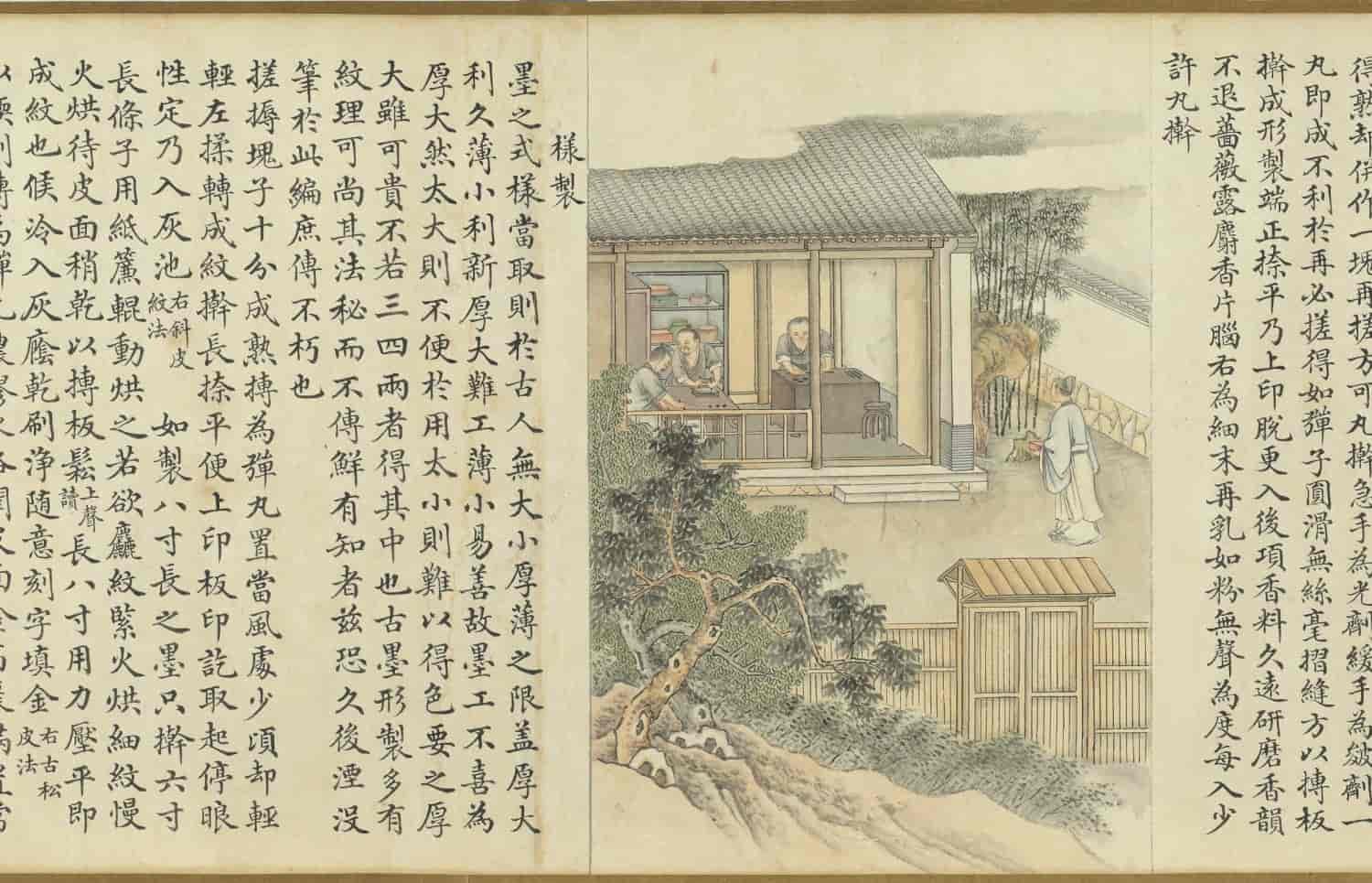
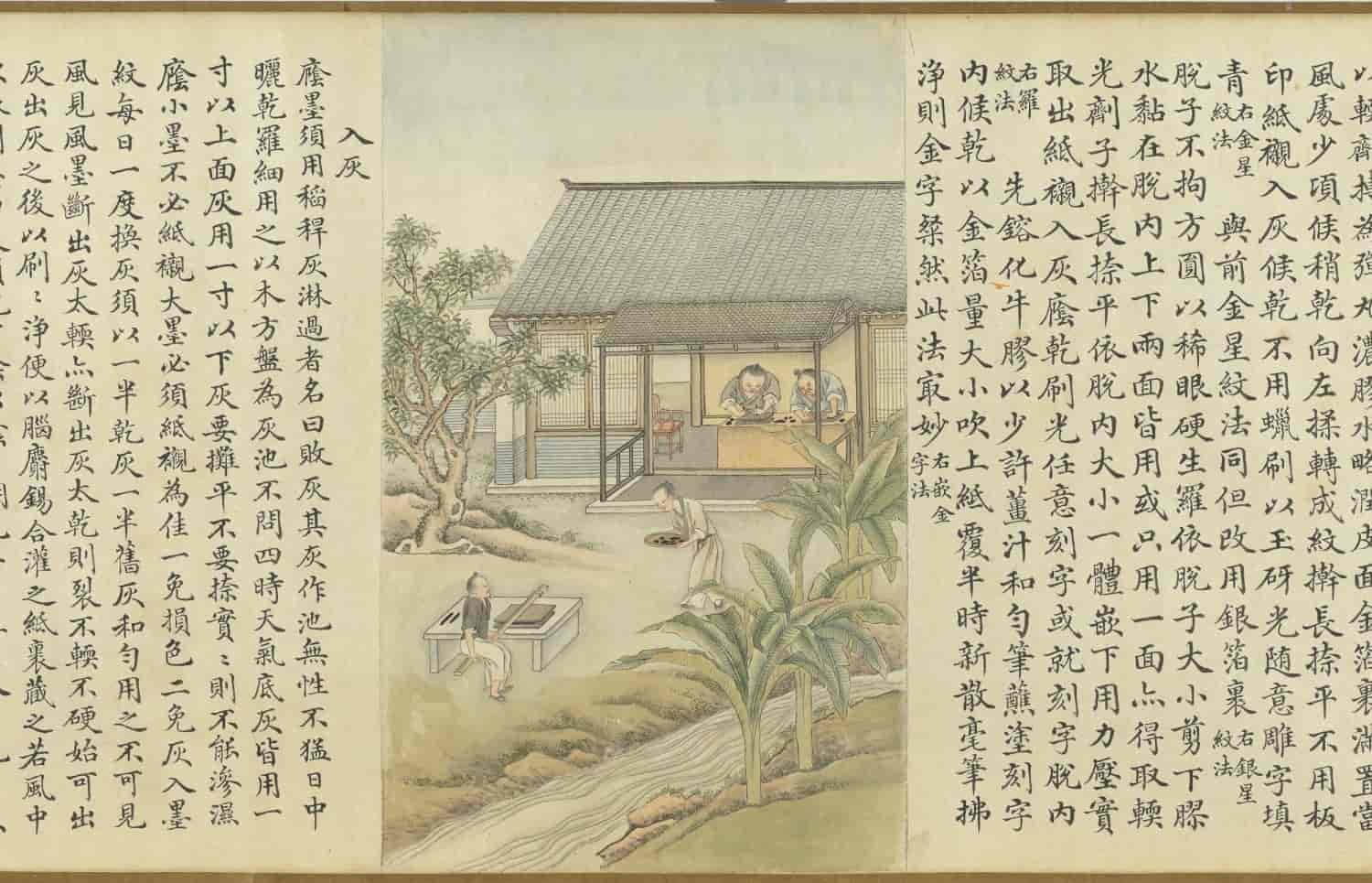
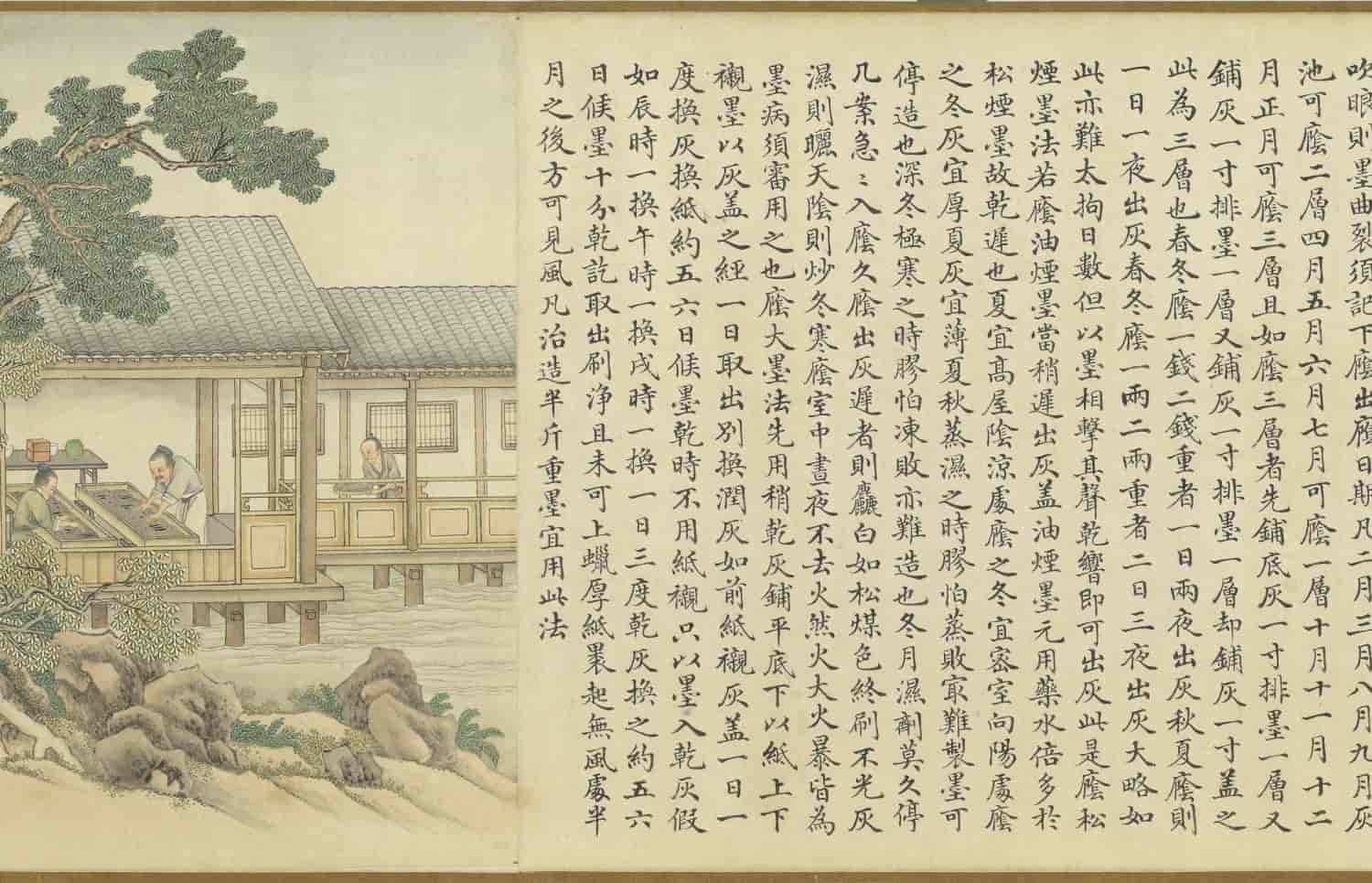
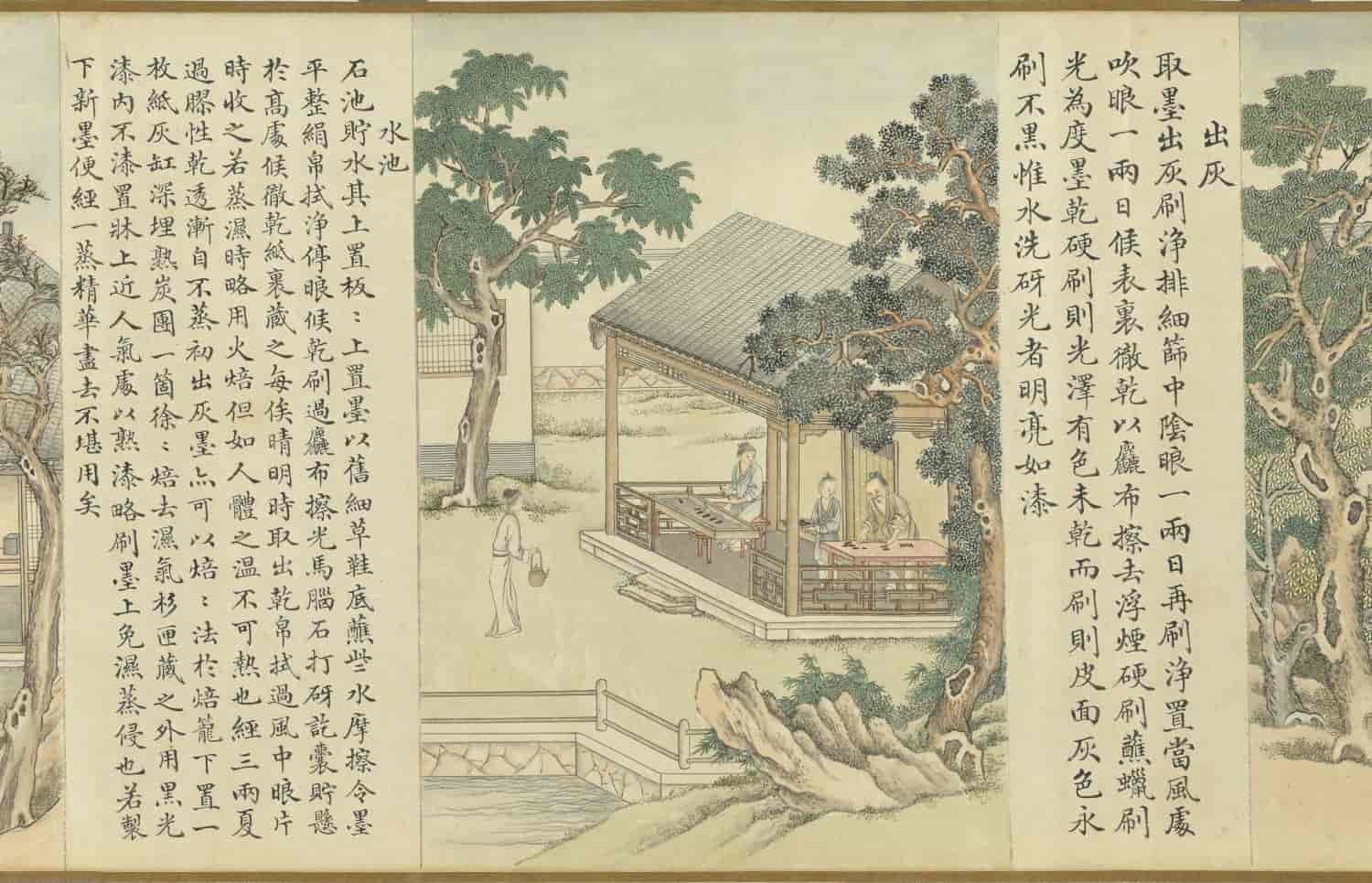
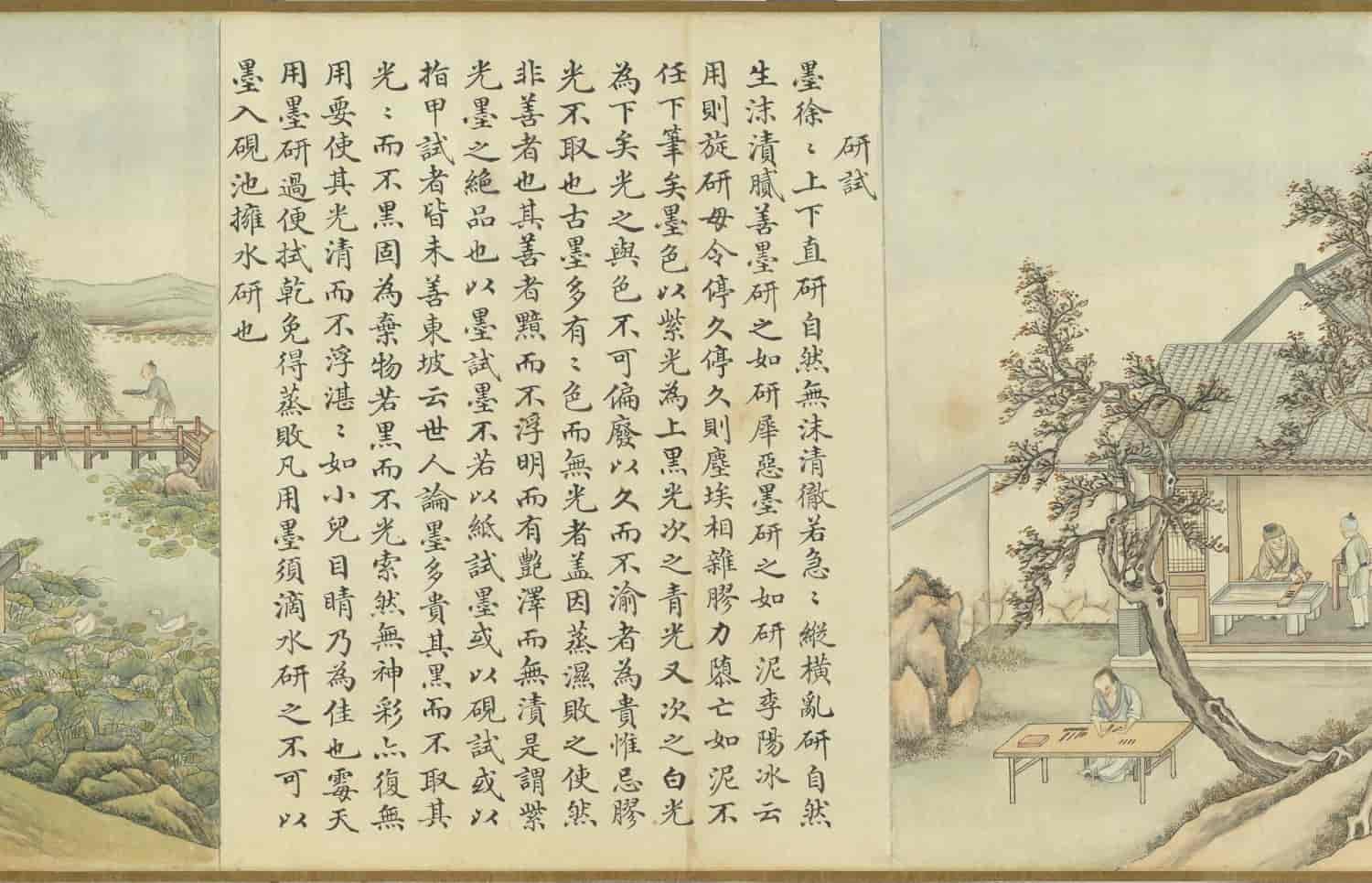
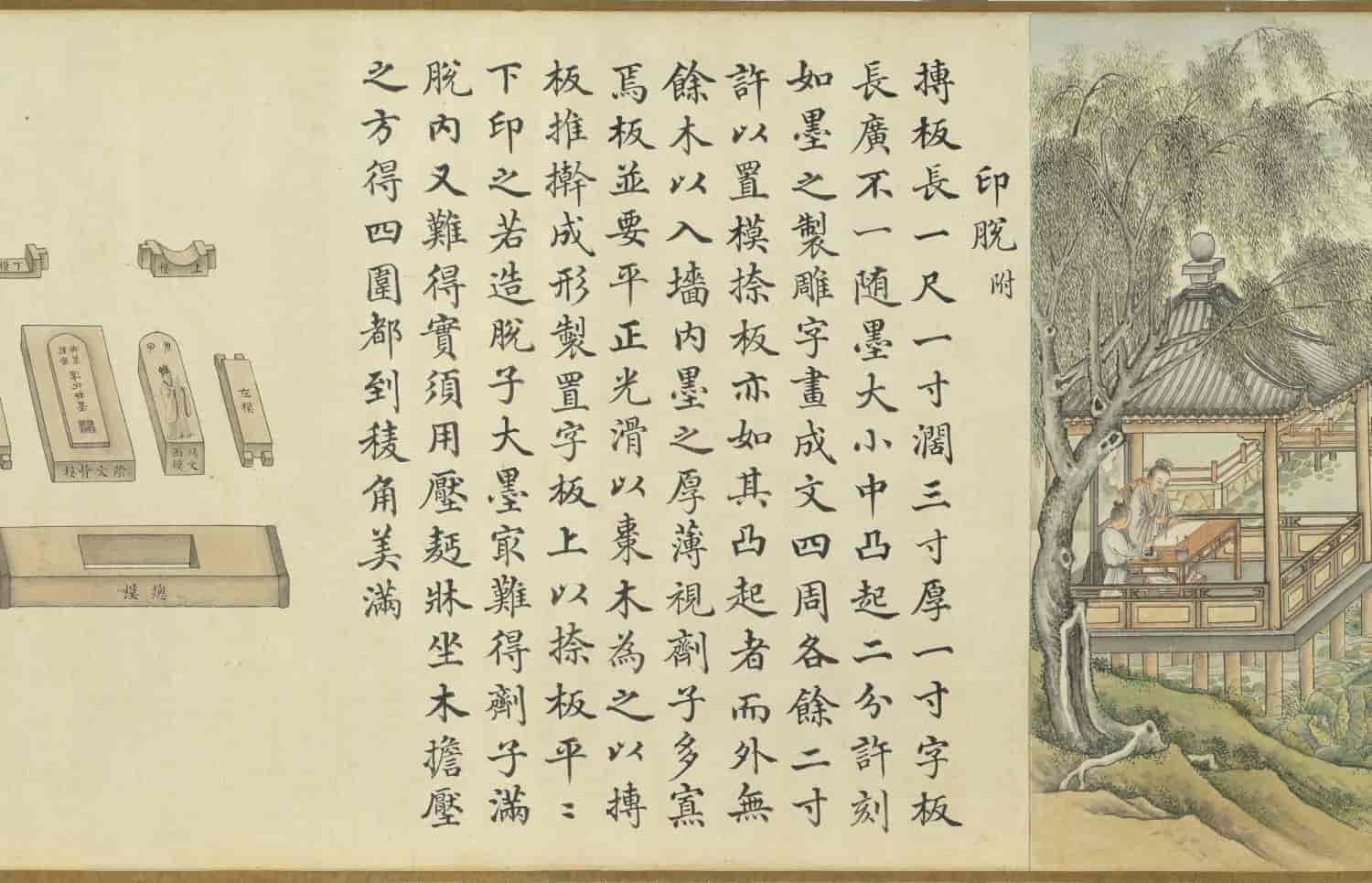
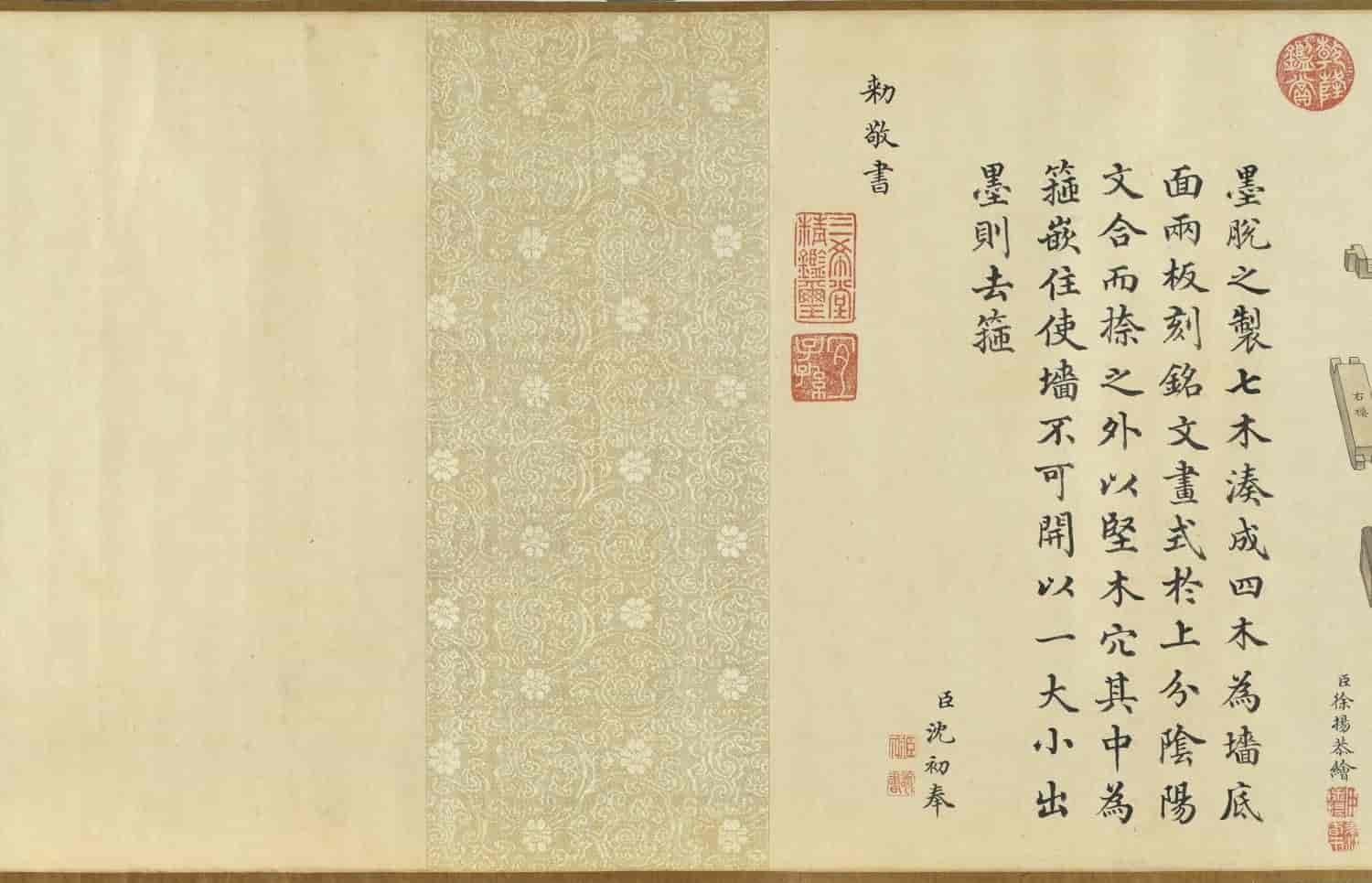
评价
目前还没有评价